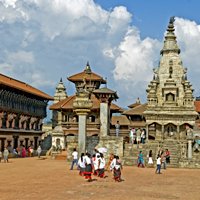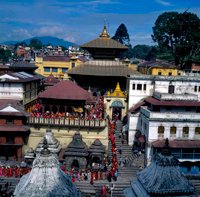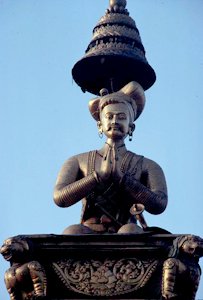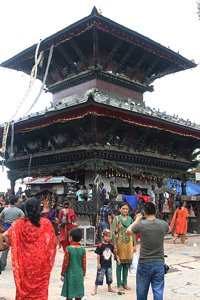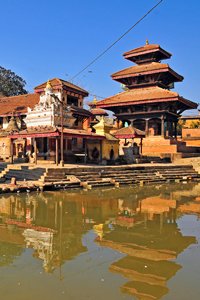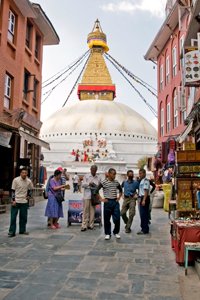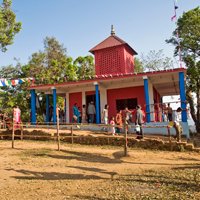| If you cannot view this Newsletter properly, Please click here. |
| |
|
| Weekly Official e-Newsletter of Nepal Tourism Board |
|
|
 |
|
|
2012 marks the start of the International Year of the Rhino
June 5, 2012 is marked as the start of the International Year of the Rhino.
With increasing alarm for the fate of the rhinoceros species and growing concern over the increased illegal hunting of rhinos and demand for rhino horns all over has prompted President Susilo Bambang Yudhoyono of Indonesia to declare 5 June 2012 as the start of the International Year of the Rhino, according to a press statement issued by the World Wildlife Federation (WWF), Nepal.
President Yudhoyono took this step at the request of International Union for Conservation of Nature (IUCN) and other conservation organizations, because the future survival of the endangered rhinos depends only on effective conservation actions on the ground.
Welcoming the declaration, Director General of Department of National Parks and Wildlife Conservation Krishna Prasad Acharya said, "Even though Nepal has achieved zero poaching in 2011, the threat remains high with poaching and increased demand for illegal rhino horn trade. With this declaration, we will put heightened collaborative efforts for the rhino protection and their habitat conservation."
In the last decade, two rhino subspecies, in Cameroon and in Vietnam have gone extinct and the populations of two more subspecies are perilously close to extinction because of an increased illegal hunting and non-traditional use of rhino horn.
However, effective conservation by governments in Africa and Asia, in some cases with the support of non-governmental conservation organizations, has been successful in bringing back the southern white rhinoceros, black rhinoceros and Indian rhinoceros from the brink of extinction. The year
2011 was a landmark year for conservation in Nepal as not a single rhino was killed in the country across the year.
"WWF Nepal warmly welcomes the announcement of the International Year of the Rhino by the president of Indonesia," said Anil Manandhar, Country Representative, WWF Nepal. "We hope that this initiative taken by Indonesian government will definitely help motivate Nepal and all concerned countries to take necessary actions towards rhino conservation."

Shrestha's book 'The Sacred Town of Sankhu' launched
Dr Bal Gopal Shrestha's latest book 'The Sacred Town of Sankhu: The Anthropology of Newar Ritual, Religion and Society in Nepal' was released Jointly by Professor David Gellner and chief guest, Nepalese scholar Giridhar Lall Manandhar, in an event at the University of Oxford on June 5.
The program started with Dr Shrestha introducing his book to the audience.
He explained how he had closely observed the rituals connected to the culture and religion of his hometown Sankhu, which later led him to carry out anthropological research in this field.
Following his graduation in political science from T.U. Nepal, he started assisting a Dutch anthropologist late A. W. (Bert) Van den Hoek with whom he produced some remarkable works in the field of South-Asian anthropology focused in the city of Kathmandu. Later Dr Shrestha carried out his research on rituals of Sankhu which are included in his book. He further explained that several facts like the presence of ancient inscriptions, ancient Buddhist cult that are still continued today as age-old traditions, etc prove that Sankhu is a very ancient settlement with significant contribution to Nepalese
reception was held at the end of the formal programme.

Buddhist Lama Works to Preserve Vanishing Culture
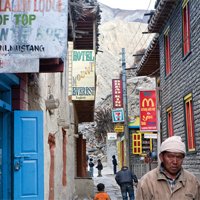 By Nina Wegner
Vice President, Vanishing Cultures Project
Khenpo Tenzin Sangpo is worried about the future of his community. He is the abbot of Kag Chode Thupten Samphel Ling Monastery, a Tibetan Buddhist monastery in the town of Kagbeni, which lies in the foothills of the Nepali Himalaya. There, in the protective folds of the Annapurna and Dauligiri ranges, he feels that the spiritual culture of his people is eroding. By Nina Wegner
Vice President, Vanishing Cultures Project
Khenpo Tenzin Sangpo is worried about the future of his community. He is the abbot of Kag Chode Thupten Samphel Ling Monastery, a Tibetan Buddhist monastery in the town of Kagbeni, which lies in the foothills of the Nepali Himalaya. There, in the protective folds of the Annapurna and Dauligiri ranges, he feels that the spiritual culture of his people is eroding.
Historically, Kagbeni was a mighty fortress town on the southern border of the region of Nepal called the Kingdom of Lo. The people of Lo -- the Loba -- are ethnically Tibetan and speak a dialect of Tibetan called Lowa. Their culture and identity is steeped in the practice of Tibetan Buddhism, and after the Chinese occupation of Tibet, the Loba community became one of the best surviving examples of traditional Tibetan culture left in the world. But all this is changing.
"The main threat that I find so far is lack of awareness and understanding among the local people about the rich value and benefit of their culture," Khenpo Tenzin Sangpo wrote in an e-mail. "And adoption of Western consumerist culture has also posed similar threats among the youths, making them more attentive and excited in obtaining a lifestyle with more, or only, material luxury."
In an era of globalization and modernization, traditional communities like the Loba are struggling to balance modernity with tradition as they join the developing world. A recent influx of new technologies, goods, and cultural influences from wealthier nations is shifting the way the people of Kagbeni view their lives. The traditional lifestyle, which until recently operated within a subsistence economy, is now seen as obsolete. Khenpo Tenzin feels the youth of Kagbeni are especially susceptible to this as they become educated in an increasingly global era that emphasizes the importance of financial status and stability. This is becoming, Khenpo Tenzin says, a turn away from a former, more spiritual way of life to a more material one.
While many Koreans believe the birthplace of Buddha to be in India, Nepal's state tourism agency aims to correct the misconception and promote their country as the actual birthplace of Buddha.
As the year marks Visit Lumbini Year, Nepal Tourism Board also aims to draw more Korean tourists to the major Buddhist pilgrimage site and establish the place as a symbol of peace.
"Lumbini is the birthplace of Lord Buddha born more than 2,500 years ago. As the year marks the Visit Lumbini Year, we plan to establish the place as the symbol of peace and spread Buddha's messages to the world," said Hikmat Singh Ayer, Director of Corporate Services of Nepal Tourism Board.
Lumbini, listed as a UNESCO World Heritage Site, is a pilgrimage site that attracts a large number of Buddhist devotees from around the world.
"Throughout the campaign, we will conduct active promotion work to draw Buddhist devotees as well as trekkers and backpackers to Nepal," Ayer said.
He said Nepal aims to attract 1 million foreign visitors this year and including more from Korea.
"We see it as positive that Korean tourists are increasing quickly over time," he said.
Korean visitors are expected to exceed 30,000 this year, an increase from the 23,675 Koreans traveled to Nepal last year.
"We will hire more tour guides who can speak Korean and offer a variety of travel packages that can appeal to them," Ayer said.
The Nepalese government plans to turn the holy place for Buddhists into a modern Buddhism tourist site with modern and clean hotels and restaurants.
Nepal, sandwiched between China and India, boasts unique natural landscapes.
An increasing number of tourists visit the country to experience natural wonder the country offers from the world's highest point Mount Everest to the lush jungles in the southern region.
The protected areas cover 23 percent of the country's land which includes 10 national parks, three wild animal protection sites and six other protection areas.
With 101 ethnic tribes and 92 languages spoken, the country offers a variety of cultural experience as well.
culture and history.
On the occasion, Giridhar Manandhar expressed his view that Newar culture is such a strong culture in itself that we can place it well above both the popular religions Buddhism and Hinduism and call Newar a religion on its own right. Newars have some very distinct socio-cultural qualities that clearly explain their behaviour in every walk of life. He gave several examples including the tradition in which if a woman wants to leave her husband, she can easily do so by leaving two betel nuts under the pillow, which she receives during her marriage.
Prof Dr Gellner highlighted various aspects that are specific to the tradition of Sankhu. He emphasized that Sankhu is the town, which has given the cult of Swasthani written in Nepalbhasha which today is read by Nepalis not only in Nepal but around the world. Also the style of traditional Buddhist cave that can be found in Sankhu proves that the religious history can be traced back to at least 4-7th Century.
More than fifty guests attended the event. The event concluded with a Traditional Nepalese dinner and lively interaction among the audience.
Dr Shrestha is currently a research fellow at the Institute of Social and Cultural Anthropology, and associate with Wolfson College, in the university of Oxford, UK. The book is published from the Cambridge Scholars Publishing.

Solo photo exhibition in Hannover
A solo photo exhibition of young artist Lujaw Singh was held in
Hannover on May 21st and 22nd.The Mayor of Hannover city Ms Regine
Kramarek and Nepalese Ambassador to Germany Suresh Pradhan opened the exhibition at the city centre of the
Hannover city. The exhibition was arranged jointly by German Nepal
Friendship Association and PD Dr. Malakh Shrestha (Cardiologist),
Associate Professor, Chief Surgeon and Director of Aortic Surgery at the Hannover School of Medicine.
The theme of the photo exhibition was to portray various aspects of
Lumbini and Lord Buddha while we are launching "Lumbini Year'' this year.
Lujaw Singh, a young artist and photographer, also showed a documentary film on Lumbini on the occasion.
Mayor of Hannover City Ms Kramarek while recalling the Nepalese pavilion at the Hannover Expo in 2000 appreciated the Nepalese culture and arts and scope of relations in future between Germany and Nepal. Nepalese Ambassador to Germany Suresh Pradhan highlighted the Nepal German relationships,particularly in the field of arts, culture and tourism and need to enhance it in future at the government as well as people level. Honorary Consul General and president of German Nepal Friendship Association Ram Thapa, Dr Malakh Shrestha and photographer artist Lujaw Singh also spoke on the occasion. A "We live in a time where we have completely lost the true meaning of life and everything around us turned to be artificial," he writes. And yet, he acknowledges that development and globalization has improved the local economy; moreover, it has led to some important cultural preservation projects in the area. Because Kagbeni is a major stop on a trail through the Annapurna Range, it has drawn many tourists and created a booming tourism economy. The influx of foreigners to the region and increased awareness of Kagbeni's history has led to some valuable monastic and cultural restoration projects funded by international NGOs. Thus, Khenpo Tenzin is careful not to criticize globalization as a wholly negative influence. Instead, he sees it as a powerful force that should be tempered with careful stewardship of culture. And he holds that education is the key to a culturally rich and healthy community.
Khenpo's own academic life is testament to his devotion to education: "Khenpo," or "abbot," is a title only bestowed to monks who have achieved the highest learning and deepest understanding of Tibetan Buddhist philosophy. He feels that the right education can help young people understand and value their culture.
"Although modern educational facilities in most of the government or private boarding schools around the Himalayan region has made life more adjustable in leading a life in the 21st century, most of them have failed to include any program in their curriculum which educates students on cultural values and their benefits," he wrote. "So, the present educational system is also creating a vacant in the heart of today's youth from their traditional culture."
Khenpo Tenzin believes that for the Loba, spiritual values and cultural values go hand in hand. In 2009, he founded a monastic school at the Kag Chode Thupten Samphel Ling Monastery. In its inaugural year, his entire student body was just four novice monks. Today, he has 23 students. He remains devoted to teaching traditional cultural and spiritual values to Loba youth.
Khenpo also remains devoted to communicating the importance of cultural survival to the world at large. He writes, "The preservation of any culture or tradition is a very important and considerate work for humanity... Any culture preserved for future generations is naturally of great service for the younger generation, since they get to learn so many precious values from these cultures and traditions."
To learn more about Khenpo Tenzin's Kag Chode Monastic School, visit http://kagchode.com/.
(News courtesy: http://www.huffingtonpost.com/nina-wegner/tibet-culture-vanishing-_b_1569981.html)

Birthplace of Buddha lures people to Nepal
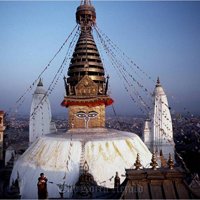 By Lee Woo-young (wylee@heraldm.com)
While many Koreans believe the birthplace of Buddha to be in India, Nepal's state tourism agency aims to correct the misconception and promote their country as the actual birthplace of Buddha. By Lee Woo-young (wylee@heraldm.com)
While many Koreans believe the birthplace of Buddha to be in India, Nepal's state tourism agency aims to correct the misconception and promote their country as the actual birthplace of Buddha.
As the year marks Visit Lumbini Year, Nepal Tourism Board also aims to draw more Korean tourists to the major Buddhist pilgrimage site and establish the place as a symbol of peace.
"Lumbini is the birthplace of Lord Buddha born more than 2,500 years ago. As the year marks the Visit Lumbini Year, we plan to establish the place as the symbol of peace and spread Buddha's messages to the world," said Hikmat Singh Ayer, Director of Corporate Services of Nepal Tourism Board.
Lumbini, listed as a UNESCO World Heritage Site, is a pilgrimage site that attracts a large number of Buddhist devotees from around the world.
"Throughout the campaign, we will conduct active promotion work to draw Buddhist devotees as well as trekkers and backpackers to Nepal," Ayer said.
He said Nepal aims to attract 1 million foreign visitors this year and including more from Korea.
"We see it as positive that Korean tourists are increasing quickly over time," he said.
Korean visitors are expected to exceed 30,000 this year, an increase from the 23,675 Koreans traveled to Nepal last year.
"We will hire more tour guides who can speak Korean and offer a variety of travel packages that can appeal to them," Ayer said.
The Nepalese government plans to turn the holy place for Buddhists into a modern Buddhism tourist site with modern and clean hotels and restaurants.
Nepal, sandwiched between China and India, boasts unique natural landscapes.
An increasing number of tourists visit the country to experience natural wonder the country offers from the world's highest point Mount Everest to the lush jungles in the southern region.
The protected areas cover 23 percent of the country's land which includes 10 national parks, three wild animal protection sites and six other protection areas.
With 101 ethnic tribes and 92 languages spoken, the country offers a variety of cultural experience as well.
The board recommends tourists looking for historical experiences to visit Lumbini and other UNESCO World Heritage Sites including Swayambhunath Temple, the oldest temple in Nepal.
Tourists can also partake in trekking, jungle safari, rafting, paragliding, rock climbing in several parts of the country.
(Courtesy: www.Koreaherald.com)

The Embassy of Nepal Participates in KOTFA-2012
 The Embassy of Nepal in Seoul participated in the 25th Korea World Travel Fair (KOTFA)-2012 being held in Convention and Exhibition Centre in Seoul from June 7 to 10, 2012. KOTFA is one of the largest international tourism fairs held annually in Korea. The tourism organizations, foreign missions stationed in Seoul as well as travel and tour operators from more than 60 countries including the domestic travel and tour operators are engaged in promoting their tourism products.
Along with the Embassy of Nepal, Trekking Agencies' Association of Nepal (TAAN) and Makalu Adventure Travel and Tours Pvt. Ltd. are representing the private sector of Nepal. The identical decoration of Nepali booth has attracted a considerable number of visitors The Embassy of Nepal in Seoul participated in the 25th Korea World Travel Fair (KOTFA)-2012 being held in Convention and Exhibition Centre in Seoul from June 7 to 10, 2012. KOTFA is one of the largest international tourism fairs held annually in Korea. The tourism organizations, foreign missions stationed in Seoul as well as travel and tour operators from more than 60 countries including the domestic travel and tour operators are engaged in promoting their tourism products.
Along with the Embassy of Nepal, Trekking Agencies' Association of Nepal (TAAN) and Makalu Adventure Travel and Tours Pvt. Ltd. are representing the private sector of Nepal. The identical decoration of Nepali booth has attracted a considerable number of visitors

|
|
|
| |
| Kagbeni, a medieval fortress town in the Himalayas, struggles to balance modernity with traditional culture. (Taylor Weidman/Vanishing Cultures Project) |
|
|
| |
Upcoming Events |
| Tamang Mahotsav 2069 |
| Date :- |
31 May - 2 June 2012 |
| Venue :- |
Tudikhel, Kathmandu |
| Organizer :- |
Nepal National Tamang Ghedung, Kathmandu |
|
|
|
|
| |
Photo Feature |
| Glimpses of 5th International Sagarmatha(Everest) Day observed on May 29, 2012 in Kathmandu |
|
|
|
|

| Editor: Sarad Pradhan |
| Asst. Editor: Sudhan Subedi |
|
|
|
|
| |
|
| Nepal Tourism Board (NTB) has sought to ensure that the contents of this newsletter are accurate at the time of transmission. NTB does not accept responsibility for any damage, loss, injury or inconvenience arising in connection with the contents of this newsletter.
Nepal Tourism Board wishes to thank all stakeholders for their wonderful support and assistance for promoting Nepal as a happening destination. We request all tourism industry stakeholders to send us news and articles at mediacenter@ntb.org.np , ssubedi@ntb.org.np or ntbmediacenter@gmail.com to include them in the weekly E-newsletters. |
| |
 |


 By Nina Wegner
Vice President, Vanishing Cultures Project
Khenpo Tenzin Sangpo is worried about the future of his community. He is the abbot of Kag Chode Thupten Samphel Ling Monastery, a Tibetan Buddhist monastery in the town of Kagbeni, which lies in the foothills of the Nepali Himalaya. There, in the protective folds of the Annapurna and Dauligiri ranges, he feels that the spiritual culture of his people is eroding.
By Nina Wegner
Vice President, Vanishing Cultures Project
Khenpo Tenzin Sangpo is worried about the future of his community. He is the abbot of Kag Chode Thupten Samphel Ling Monastery, a Tibetan Buddhist monastery in the town of Kagbeni, which lies in the foothills of the Nepali Himalaya. There, in the protective folds of the Annapurna and Dauligiri ranges, he feels that the spiritual culture of his people is eroding.
 By Lee Woo-young (wylee@heraldm.com)
While many Koreans believe the birthplace of Buddha to be in India, Nepal's state tourism agency aims to correct the misconception and promote their country as the actual birthplace of Buddha.
By Lee Woo-young (wylee@heraldm.com)
While many Koreans believe the birthplace of Buddha to be in India, Nepal's state tourism agency aims to correct the misconception and promote their country as the actual birthplace of Buddha.
 The Embassy of Nepal in Seoul participated in the 25th Korea World Travel Fair (KOTFA)-2012 being held in Convention and Exhibition Centre in Seoul from June 7 to 10, 2012. KOTFA is one of the largest international tourism fairs held annually in Korea. The tourism organizations, foreign missions stationed in Seoul as well as travel and tour operators from more than 60 countries including the domestic travel and tour operators are engaged in promoting their tourism products.
Along with the Embassy of Nepal, Trekking Agencies' Association of Nepal (TAAN) and Makalu Adventure Travel and Tours Pvt. Ltd. are representing the private sector of Nepal. The identical decoration of Nepali booth has attracted a considerable number of visitors
The Embassy of Nepal in Seoul participated in the 25th Korea World Travel Fair (KOTFA)-2012 being held in Convention and Exhibition Centre in Seoul from June 7 to 10, 2012. KOTFA is one of the largest international tourism fairs held annually in Korea. The tourism organizations, foreign missions stationed in Seoul as well as travel and tour operators from more than 60 countries including the domestic travel and tour operators are engaged in promoting their tourism products.
Along with the Embassy of Nepal, Trekking Agencies' Association of Nepal (TAAN) and Makalu Adventure Travel and Tours Pvt. Ltd. are representing the private sector of Nepal. The identical decoration of Nepali booth has attracted a considerable number of visitors




